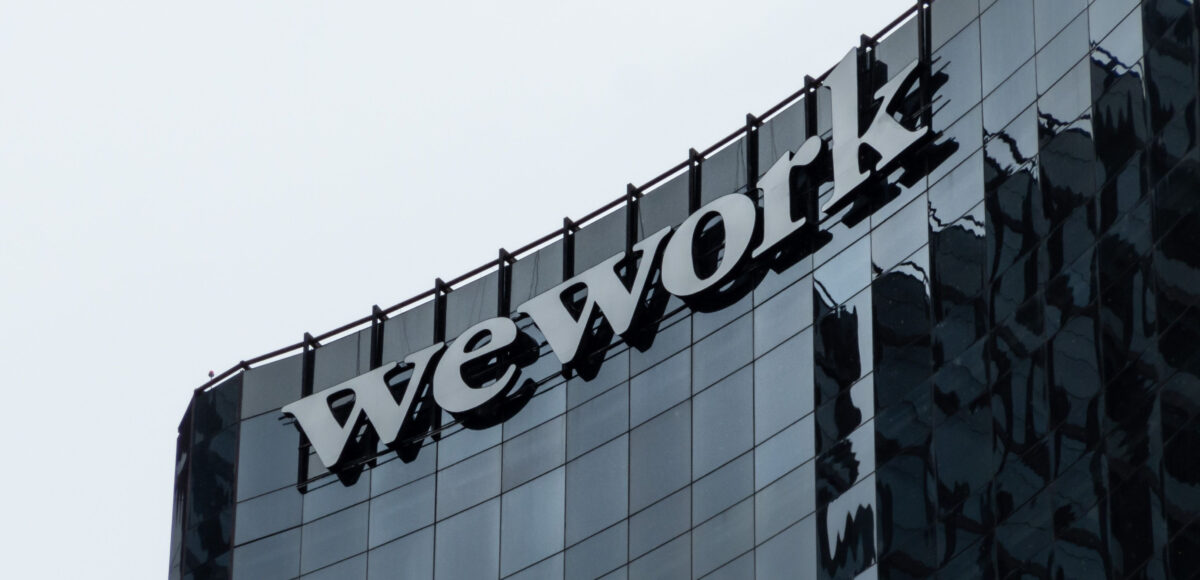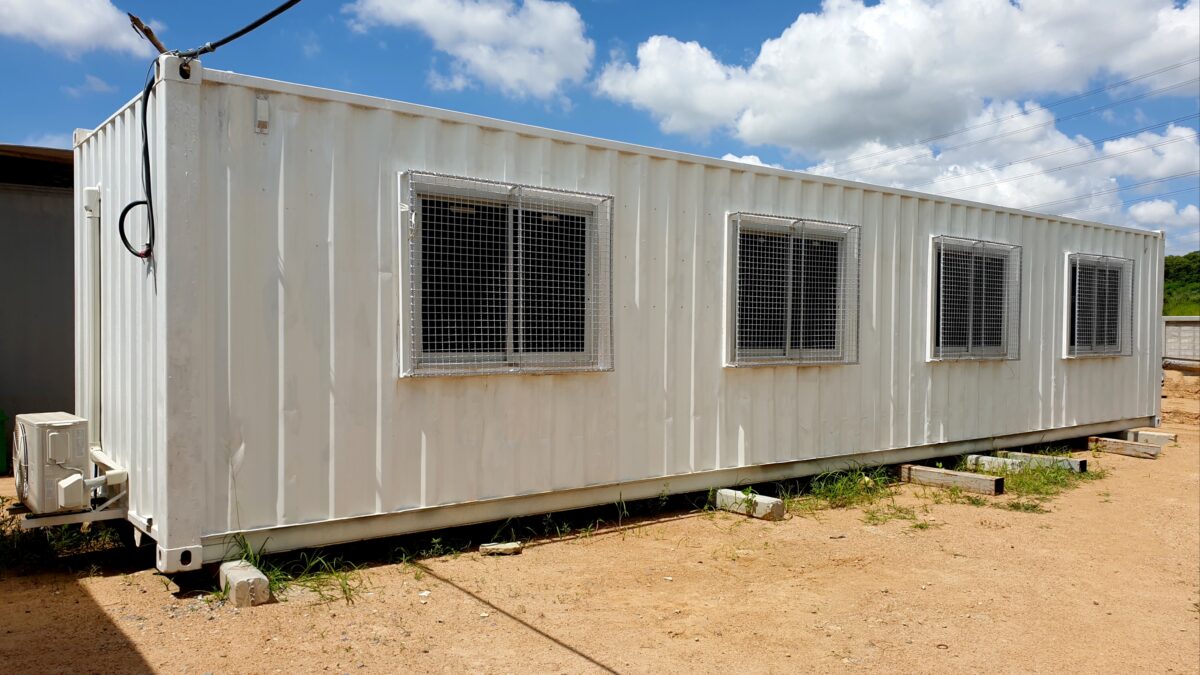Written by: Melanie Jones
Hello, I’m Melanie Jones, and today, I’m excited to take you on a deep dive into the world of workspace design and innovation on this edition of CORT Workplace Talks. Joining me for this enlightening conversation is Ebbie Wisecarver, the Head of Global Design and Development at WeWork.
In the discussion, we’re embarking on an engaging journey, peeling back the layers of WeWork’s remarkable design strategies, sustainability initiatives, and their vision for the future of flexible workspaces. We’ll also explore the pivotal role flexible furniture plays in adapting and customizing workspaces, all while maintaining a commitment to eco-friendly design.
So, fasten your seatbelts, and get ready to explore the world of WeWork’s innovative design, sustainability focus, and their vision for the ever-changing landscape of work. I found this discussion to be a thought-provoking and hope it will inspire your perception of workspace design and the future of work itself.
Listen to the full discussion below.
WeWork’s Value Proposition and Design Approach
Melanie Jones: Let’s start with what you think the top reasons are that companies come to WeWork for their space?
Ebbie Wisecarver: I think really the top reasons is that WeWork offers the whole package. We provide flexibility across space, time, and cost. We’ve also created these amazing destinations, beautiful and functional destinations, all around the world.
Companies not only have access to their local WeWork but also to our entire global portfolio. One of the major design components and the foundation of our company’s design perspective was to create thoughtful design that blurs the lines between a comfortable home and a functional office. We’ve blended that corporate hospitality element together.
It’s interesting; we were one of the first to introduce the idea of working in a lounge, which has become very valuable, especially with All-Access Memberships. Often, our lounges are packed with people working, exchanging ideas, and having impromptu meetings. It’s been successful more so even after the pandemic, as the way people work has changed.
Another valuable aspect is creating diverse environments. In recent years, inclusion and diversity, of not only the space but also among the people in the space, has become crucial. Our spaces have fostered wonderful communities that are built from the city and the local neighborhood. It’s important for people to come and feel like they fit in, that it’s a comfortable place for them.
Adapting Workspaces Post-Pandemic
Melanie: Do you think that the design strategies have changed as we’re figuring out what work looks like?
Ebbie: One thing that we’ve learned is that the workplace is just no longer “one size fits all.” We’ve really had to, and we’re still continuing to learn, that the office and the needs of the workers in the office are changing. With the return to office strategies, we’re seeing that companies are grappling with providing fixed space that might be more privatized, but also accommodating employees who want to work closer to home or maybe come into the main office for just two days. I believe it’s something we’ll continue to learn and grow from.
What’s beneficial for us is that we have around 800 locations worldwide. We can see how things are changing, and even on a global scale, they’re changing differently. The U.S. is responding differently than some European cities or Asian cities. One thing that’s become important and valuable for us is that part of what made us successful throughout the pandemic and coming out of it is that we have this basic structure and infrastructure in place. Through furniture and other components, we can be flexible within that structure.
A small example of how we’ve had to adapt our space is that even in the lively areas of the lounge or workspaces adjacent to the lounge, people wanted quiet space – like the quiet car on a train. They wanted to be connected and close together but have some rules in place that allowed them to work. So, we took one of our secondary lounges or even an area off one of our main lounges and created a quiet area, which required a behavioral change.
It’s been interesting because people still want to see and feel the liveliness while being able to do their work in an environment that suits them. Design cues and furniture perspectives can help reinforce that it’s a quiet area. That’s been an interesting example of how we’ve had to adapt our spaces coming out of COVID. It really is a fluid situation from a design perspective.
Empowering Individuals Through Design
Melanie: You’ve mentioned before that you’ve traveled and lived all over the globe. Do you design spaces differently based on where you are in the world for WeWork?
Ebbie: As a whole, we have a universal language of how we want our spaces to behave so that when people come and visit across the globe, it feels relatively familiar, right? But I do think we always want to tap into that local energy, that local vibe.We do that a lot through artists. It’s an amazing opportunity for us to bring in local artists and use our spaces as a platform to represent them. Even pieces of furniture, local pieces of furniture, are a wonderful way of showcasing the locality of where we operate.
An example I can use is when we opened our location in Lisbon, we were able to leverage their power in ceramics and tile work. In locations where we can touch on fabrics and textiles, we do that too. There’s always a need to have a strong core design and a clear spatial strategy that is relatively consistent, but we let the design and local energy come through.
This also comes through in the people who manage the space and the community. A great example is our recently opened location called Via Meravigli, 2. It’s a wonderful example where we took a more mature design aesthetic and captured the WeWork vibe while creating a more elevated, mature feeling space.
Even our desks, because it’s such a beautiful older building, deviated from our usual low-light Oakwood to a deeper walnut, and we incorporated elements that speak to the building and the neighborhood. We brought in beautiful marble, terrazo flooring, white and gray tones, and let the local trades, known in Milan and Italy shine. Leveraging local talents is important from a smart construction standpoint. So, we always aim to resonate with the neighborhood and the local vibe.
The Role of Furniture in Workspace Transformation
Melanie: Let’s talk about CORT’s Furniture-as-a-Service™ offering, an on-demand subscription approach. I was wondering, how do you see this curated furniture approach supporting growth for WeWork?
Ebbie: I find it interesting because, coming out of the pandemic, people had a chance to make their home into their office, giving them insight into what they need, like the right task chair or desk.
As they return to the office, they’ve raised their expectations. It’s fascinating to see how furniture is a powerful tool, especially as spaces change and evolve. Desk-heavy spaces are becoming a thing of the past; companies need more collaborative-style furniture, the ability to shift the space’s shape while keeping the same infrastructure. Furniture is a powerful tool that can elevate and transform a space, making it more functional.
From our standpoint, it’s the tool we’re using to turn desk-only spaces into more collaborative and social environments, which is a top priority for our members.
Feedback and Customization in Workspace Design
Melanie: How do you receive feedback from your members, especially now when everyone’s a bit of a chair expert?
Ebbie: We have surveys that provide constant feedback. Our community and operations teams relay messages, and in a lot of cases I have email interactions with members to discuss their feedback. It comes through various channels. Even our sales team gathers feedback, and we do a lot of customizations for members. This has allowed us to adapt and transform our furniture catalog based on their preferences and sensitivity to furniture and layout. Members also look to us for guidance, asking what other members are looking for, so it’s a two-way process where we can apply feedback to new members.
Problem-Solving, Flexibility, and the Role of Design in the Future Office
Melanie: That’s great. It shows that your team is really adapting, moving forward, and listening, with actionable items. So, that’s fantastic. I have a lot of friends in the design and project management community, and I see that everyone in that role is a problem solver.
Here is an interview I had with our Director of Product Development, Darrell Gardner, to capture his thoughts on how CORT is adapting and moving forward with our model.
What types of projects and problem-solving do you focus on these days, or what are the significant issues you’re trying to solve?
Ebbie: One of the biggest challenges we’re focused on right now is the return to the office. There’s an interesting marrying of business needs, the bottom line, and employee expectations regarding flexibility.
Many companies are grappling with this issue right now. What we’ve been able to do, as I mentioned before, is leverage our existing infrastructure to create collaborative environments through finishes and furniture. We’re providing flexible and thoughtful design solutions. Having so much already in place and sharing our expertise, we’ve been able to deliver spaces in as little as 2.5 months instead of the typical 5-6 months.
Companies that want to adapt and change need to make decisions quickly, and furniture plays a significant role in that. Sharing expertise helps us find faster and cost-effective solutions, reinforcing that adaptability is key as employee needs change.
Melanie: We see that with our client base, the need for flexibility is crucial right now. We have a saying, “Flexibility is the safety valve for not getting it wrong,” which reduces the chance of making mistakes. Can you share your thoughts on sustainability and WeWork’s position on it, especially regarding furniture?
Ebbie: WeWork aims to harness the power of community and make a positive impact on people and the environment. Prioritizing sustainability and creating eco-friendly spaces is crucial. Even within our spaces, as I mentioned earlier, reusing and repurposing furniture is a significant part of our sustainability efforts.
What’s interesting about furniture-as-a-service, which is such an exciting thing that CORT offers, is that it takes away the fear of committing to furniture permanently. Now companies can acquire furniture as a package and adapt it as their needs change, reducing waste and promoting sustainability. It’s not only about repurposing and reusing but also alleviating the anxiety of making permanent commitments. Knowing that the furniture you no longer use can be passed on to others is a sustainable and eco-friendly approach. It’s exciting to see companies like CORT making sustainability accessible to everyone.
Melanie: There was a time when I was in a meeting with you, and you said to your team, “Why do we buy furniture?” Then, a couple of weeks later at a global conference, Kay Sargent, Senior Principal – Director of WorkPlace at HOK similarly said to the audience, “Why are you all buying furniture?”
My mission is to get the FaaS message to those who we can support. We’re making a dent in it because we’ve come to a collision in our world between flexibility and sustainability and these are right up CORT’s alley. It’s more of an educational thing to say, FaaS isn’t about brown desks in the backroom; it’s a whole offering ecosystem that really fits today’s workplace needs. I appreciate both you and Kay acknowledging that.
Switching gears a bit, there’s a lot of change going on in real estate. How does design play a role in driving these changes forward?
Ebbie: WeWork was one of the first companies to connect what people love about their workday through intentional design, creating enhanced experiences and innate flexibility in our spaces. This has solidified our value proposition as a flexible workspace solution.
As the landscape evolves, and companies grapple with return to work strategies, spaces that are human-centric and offer flexibility are where people will thrive. Especially coming out of a pandemic, it’s reinforced the importance of being together, collaborating, and having a space that provides both quiet and collaborative areas. It’s not just about the physical space; it’s also about the community that curates it. They bring the space to life, and that’s often overlooked when discussing spaces.
Our philosophy has always been about putting members first, creating beautiful and comfortable spaces, and continuously learning what the modern workplace needs. Meeting the needs of the modern workforce and providing flexibility for members of all sizes is our focus. Collaboration with different companies and having open discussions about the future is vital because we’re all learning from each other.
The Exciting Future of Workspace Design
Melanie: What excites you in the coming months and years? What keeps you up at night thinking about things?
Ebbie: What really excites me is the idea that we’re bringing design, adaptability, and flexibility to so many individuals, improving their lives. I’ve always believed in the power of design, light, the chair you sit in, the things you touch and feel daily. You don’t need to break the bank or harm the environment to have those essential components. The energy that design and space bring to people is essential.
A personal story: my brother, who’s been in corporate America his entire working life, took an all-access membership with WeWork to work there instead of the corporate office. He texts me all the time, saying, “The energy is so great, I love my little area, I love this chair.” We’re like a showroom, members are always asking where we got this chair or art piece. It’s a great opportunity to bring design solutions to people and create spaces where they feel fantastic.
At the core of it, that’s what we’re always after, and it’s something we all share in the design world. People might not recognize exactly what’s doing it, but it’s impacting them. That’s what’s driven me forward in the design world.
What Draws People to WeWork?
Melanie: Is there one thing that pulls someone into becoming a WeWork member? Or do you think it’s the whole package?
Ebbie: It’s really the whole package, I think location always matters. We’ve always considered being accessible to trains or accessible in general in our locations. The space itself matters too; we have some spaces that people will commute to because they love it. And, of course, price matters, but that’s why WeWork works hard to be competitive. Most definitely, it’s the entire package that helps fill our spaces. Going back to our community teams, making those spaces come to life is also essential.
Melanie: You know, if going into a WeWork space makes you feel more creative, productive, innovative, it was worth the commute. Just to get in there and be with other people. One question is the all-access, what does that mean?
Ebbie: It’s almost like a gym membership. You pay a monthly fee and get access to all the WeWork locations. You can use your black card to get in and use the lounge. You don’t have a private office, but you can work from shared workspaces. In some locations, we have an office that serves as overflow if it’s in high demand. We’ve seen it become very popular, especially during COVID, for individuals who don’t want to commute to their main HQ but still want to work somewhere other than home. It’s flexible, you can book meeting rooms, and it’s available anywhere in the country and the world.
Melanie: Oh, that’s fantastic.
Ebbie: Yeah, it’s great. It’s been a great membership for people who travel a lot, too. When you’re in a new city and need Wi-Fi, coffee, and a place to work, it’s a valuable option for our members. I always get excited talking about this because it’s really us trying to discover and figure out the solution together. This is such an unprecedented time, and we’ve seen work turned on its head. We’re all working together to find out where we go next. It’s definitely an exciting time.






